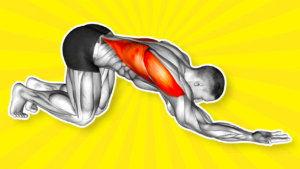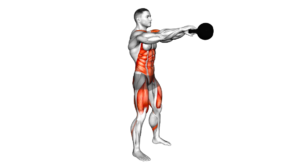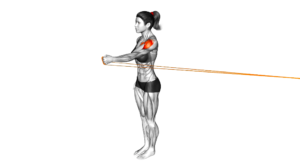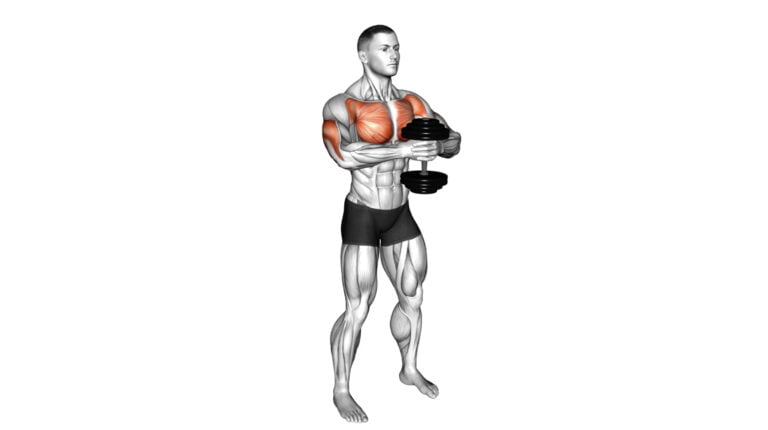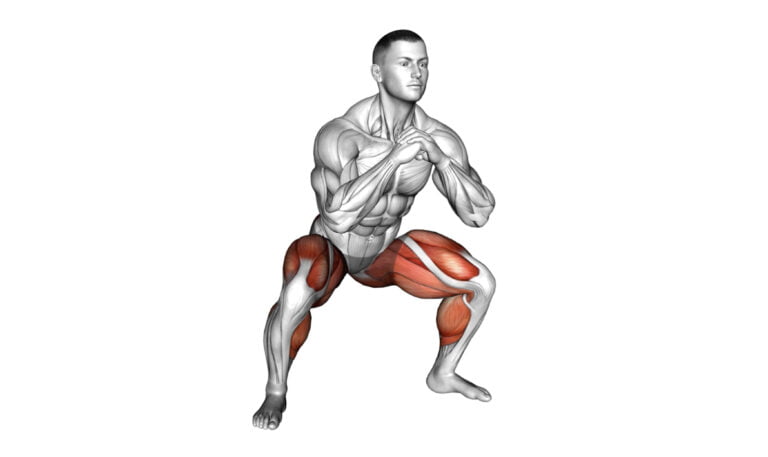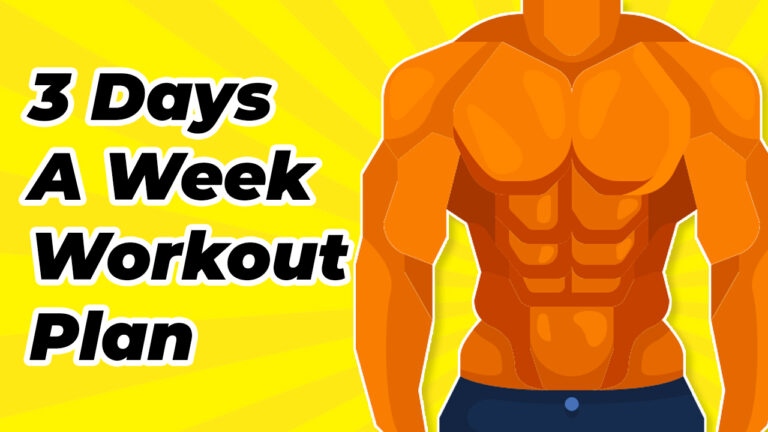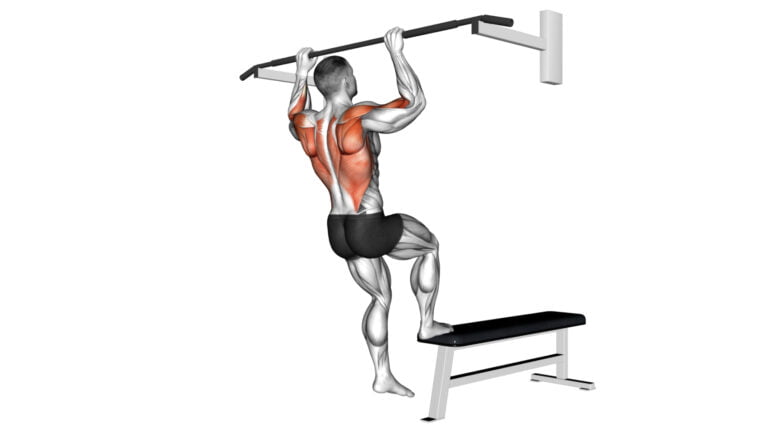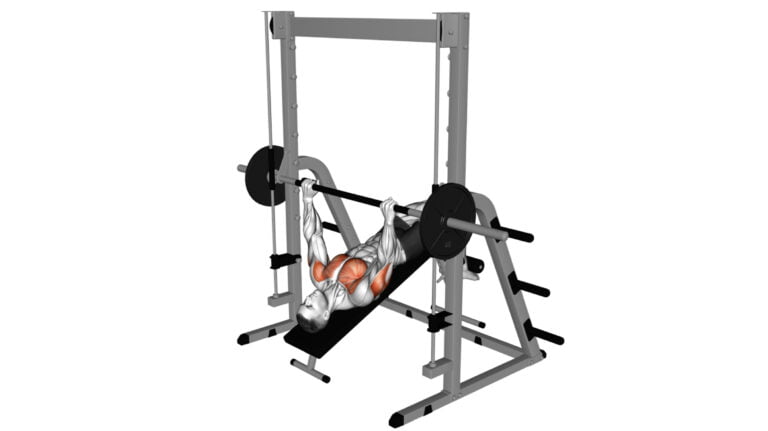10 Lats Stretching Exercises: Boost Flexibility and Strength Now!
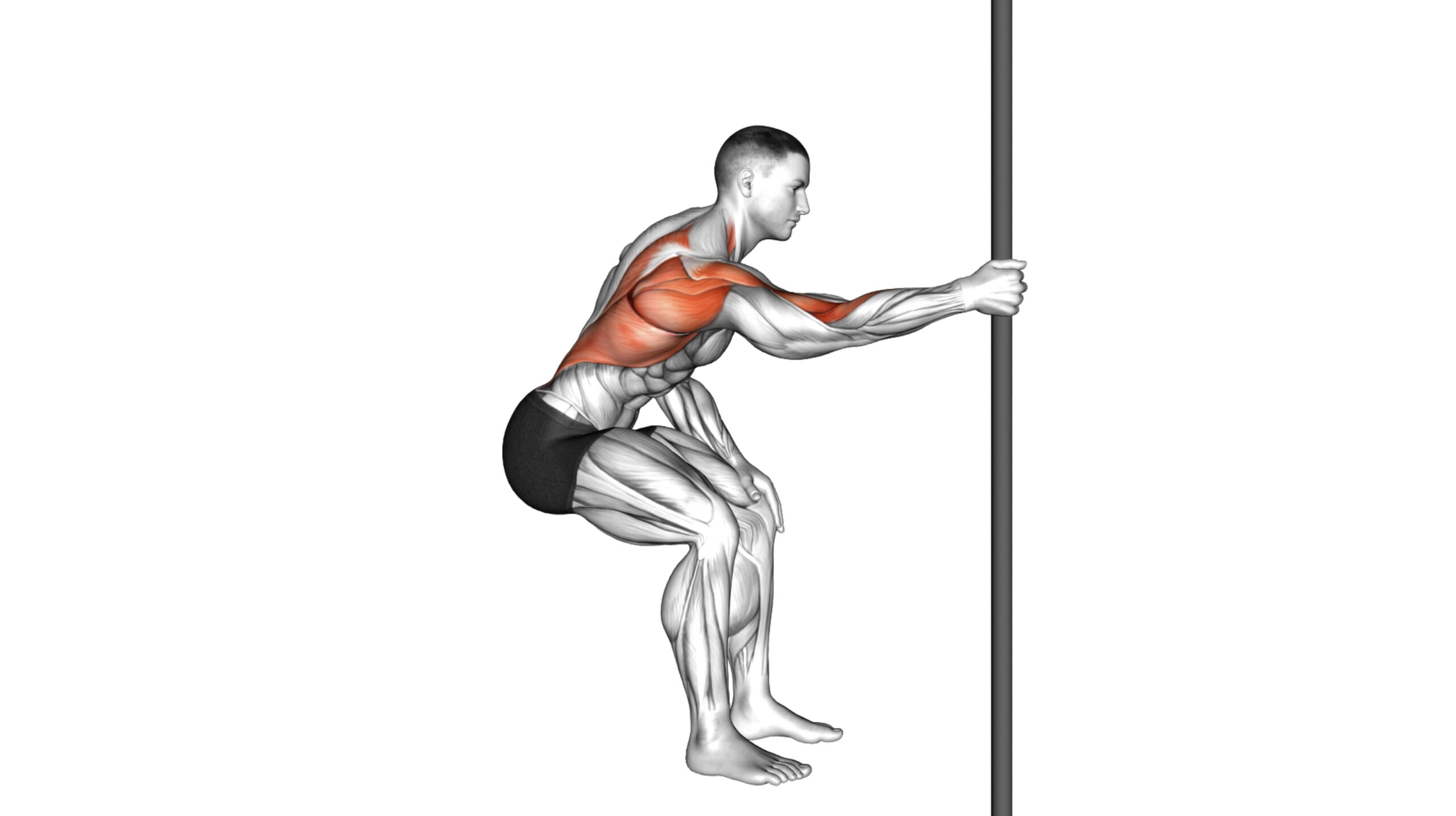
Are you looking to enhance your flexibility and strength? If so, lats stretching exercises may be just what you need. As a fitness expert with years of experience in the realm of exercise and flexibility training, I understand the importance of incorporating targeted stretches into your routine. The latissimus dorsi muscles, also known as the lats, play a crucial role in upper body movement and strength. It’s not merely about building muscle; it’s about ensuring that those muscles are flexible and functional.
Did you know that proper stretching can reduce the risk of injury while enhancing performance? Today, we’ll unveil the secrets to effective latissimus dorsi stretching exercises designed to enhance both strength and flexibility for an overall improvement in your fitness routine. So let’s delve into these 10 dynamic stretches for your lats!
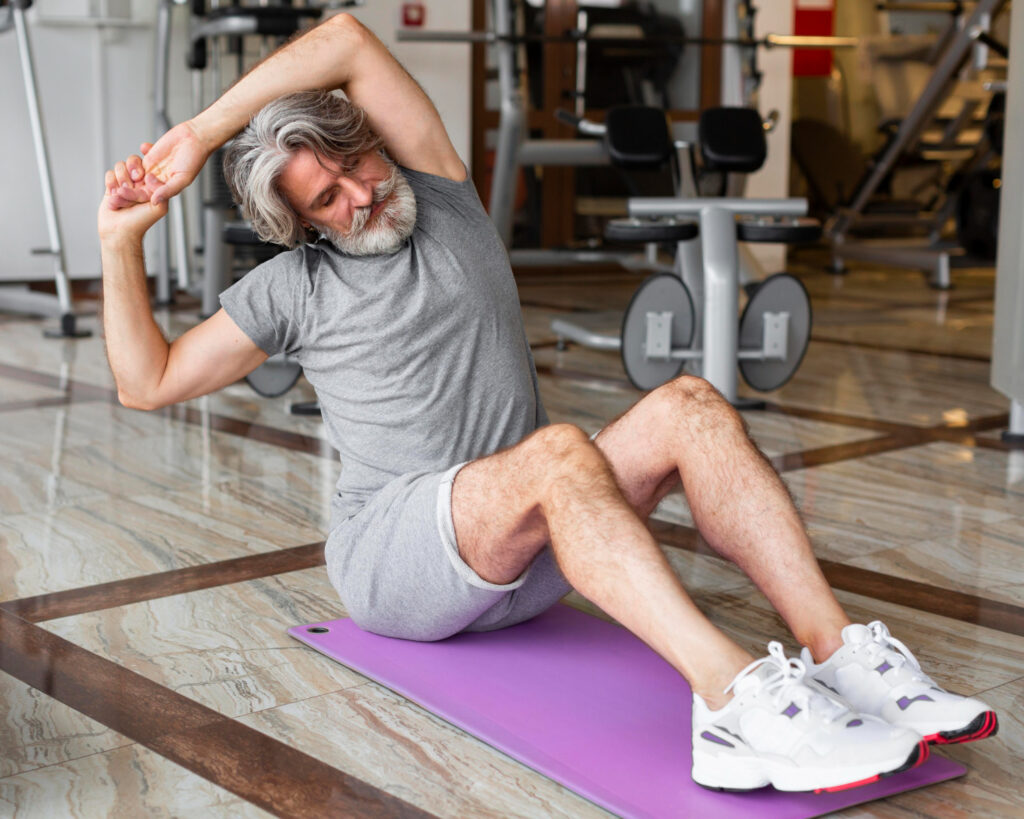
Key Takeaways
- Stretching the latissimus dorsi muscles improves flexibility and strength, which enhances performance in various physical activities like pull-ups, swimming strokes, and lifting weights. Regularly including these stretches in your routine can lead to smoother movements and a greater range of motion.
- Incorporating both dynamic and static stretches for the lats prior to working out prepares the muscles by increasing blood flow, while post-exercise stretching aids in muscle recovery and reduces stiffness. This balanced approach helps prevent injuries related to tightness or overuse of the lats.
- Proper form is crucial when performing latissimus dorsi stretching exercises to avoid strain or injury. Slow controlled movements, deep breathing during holds, and not pushing beyond personal limits are essential practices that ensure effectiveness while minimizing risks.
- You can enhance your workout routine by integrating specific lat stretches such as dynamic back stretch, one-handed hang stretch, seated lower back stretch, and slopes towards stretch among others listed. These exercises target the lats efficiently leading to improved posture and less risk of shoulder or back discomfort.
- Listening to your body is key; adapting sets, reps, intensity based on individual capabilities ensures benefits without undue stress on muscles or joints. Optimally adjusted routines foster better results in terms of flexibility gains and muscular health maintenance over time.
Importance of stretching for flexibility and strength
Stretching plays a vital role in enhancing flexibility and strength, especially when targeting the latissimus dorsi muscles. It helps maintain muscle health, allowing for a wider range of motion which is essential for performing exercises like pull-ups, deadlifts, and push-ups more effectively.
By incorporating lats stretching exercises into your routine, you not only improve shoulder extension and rotation but also reduce the risk of back pain and shoulder injuries.
Regular stretching ensures that muscles remain flexible, strong, and healthy. Flexibility aids in achieving better posture by releasing tension around the shoulders and lower back.
This is crucial for lifting weights safely and efficiently during workouts such as squats or chin-ups. Strengthening these muscles through stretches also supports the upper body’s overall function, facilitating smoother movements across various fitness activities while mitigating potential adhesions or trigger points that can lead to discomfort or injury.
Benefits of Stretching the Lats
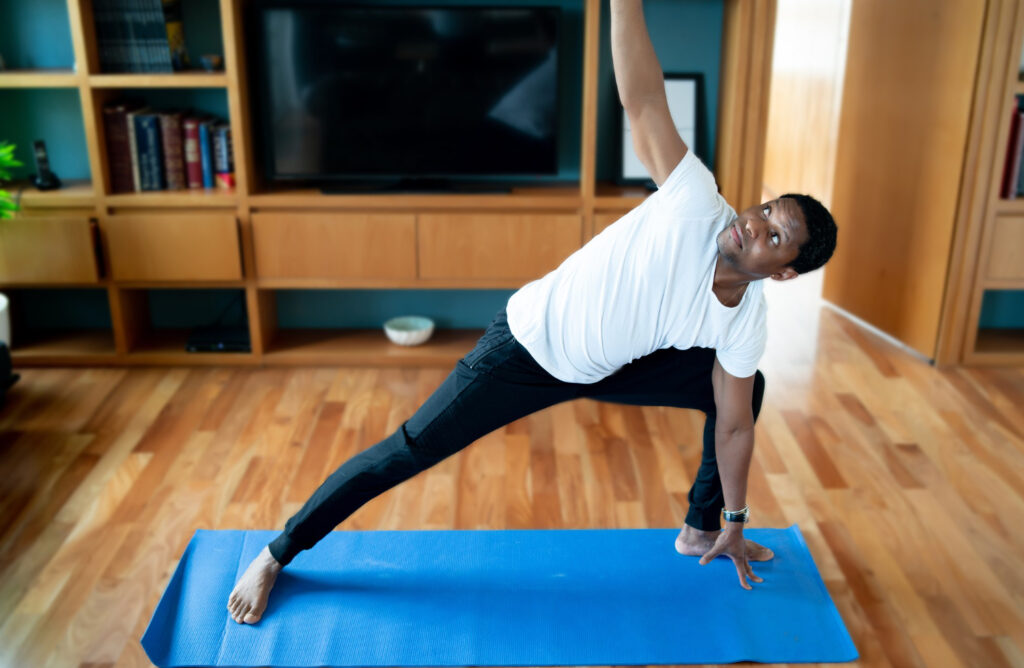
Stretching the lats improves flexibility, increasing your range of motion and enhancing overall performance. It also reduces the risk of injury by promoting better muscle function and balance.
Improved range of motion
Regularly stretching the latissimus dorsi muscles significantly improves your range of motion, especially in the shoulders and back. This enhanced flexibility allows for smoother internal rotation, abduction, and adduction movements essential in various physical activities.
With a greater range of motion, actions like reaching overhead or pulling become much easier and more efficient.
Improving your range of motion also helps prevent tightness around the shoulder blades and spine, reducing the likelihood of experiencing shoulder pain or back injuries. Exercises specifically targeting lat muscles promote healthier posture by encouraging retraction and proper alignment of the scapulae.
As these muscles stretch and strengthen, activities such as pushups, pulldowns, and even simple tasks like lifting objects off a high shelf feel less strenuous.
Enhanced performance
Stretching the latissimus dorsi muscles plays a crucial role in boosting athletic performance. It enables greater flexibility and range of motion in the shoulder joint, allowing for more powerful movements across various sports and activities.
With improved mobility, athletes can execute techniques that require extensive upper-body strength with ease, such as pull-ups or swimming strokes.
Incorporating dynamic stretching before workouts and static stretches post-exercise helps maintain optimal muscle condition. This practice not only prepares the muscles by increasing blood flow but also aids in recovery by reducing lactate build-up after intense physical activity.
Enhanced lats flexibility directly contributes to better posture, less strain during weightlifting, and reduced risk of experiencing back injury or shoulder impingement.
Reduced risk of injury

Regularly stretching the latissimus dorsi can lead to a significant decrease in muscle and joint injuries. This happens because flexibility helps your body handle stress from various movements, whether you’re lifting weights or reaching for something high up.
By keeping these muscles limber, you reduce the chance of pulls and tears, allowing you to perform activities with greater ease and less pain.
Flexibility in the lats also supports healthy shoulder girdle movements. It prevents overuse injuries that often occur from repetitive motions like pull ups or swimming. With consistent stretching, your muscles maintain a good range of motion, which ensures that shoulders can move freely without strain.
This makes tasks involving upper limb movement safer and more efficient by protecting against strains on joints and connective tissues.
Top 10 Latissimus Dorsi Stretching Exercises
Enhance your flexibility and strength with these effective lats stretching exercises. Read on to discover how you can improve your range of motion and reduce the risk of injury.
1. Dynamic Back Stretch
The dynamic back stretch targets the latissimus dorsi, promoting flexibility and range of motion. To perform this stretch, stand with feet shoulder-width apart, interlock fingers and reach arms forward.
Then, lift the arms overhead while maintaining a slight bend in the knees and exhale as you lean to one side. Inhale as you return to center and repeat on the other side. This exercise engages the lats while also stretching the intercostal muscles between ribs.
2. Standing Lateral Stretch
Transitioning from the dynamic back stretch, the standing lateral stretch targets the latissimus dorsi and helps improve flexibility. Stand with your feet hip-width apart and raise one arm overhead while leaning to the opposite side.
Hold for 15-30 seconds, feeling a gentle pull along your side.
To deepen the stretch, add a slight lean of the hips to the opposite direction of your raised arm. Remember to breathe deeply and switch sides after stretching each side.
3. Fixed Bar Back Stretch
To perform the Fixed Bar Back Stretch, stand facing a bar at shoulder level. Grasp the bar with an overhand grip and step back slightly. Keep your feet hip-width apart and lean forward from your hips while maintaining a straight back.
Feel the stretch in your lats, shoulders, and upper back. Hold this position for 20-30 seconds, breathing deeply throughout the stretch.
This exercise targets the latissimus dorsi muscles, promoting flexibility in the shoulders and upper back. It also helps release tension built up from activities like weight lifting or sitting for prolonged periods.
4. Kneeling Lat Stretch
Relieve tension in your lats by kneeling on the floor and extending your arms overhead. With palms facing up, flex forward laterally, feeling a gentle stretch along the sides of your torso.
Hold for 15-30 seconds and repeat on the other side to address muscle imbalances. Engage in this stretch pre or post-workout to enhance flexibility and reduce tightness in your latissimus dorsi.
Moving on to “5. One Handed Hang Stretch,” let’s explore another effective latissimus dorsi stretch that can be easily incorporated into your routine.
5. One Handed Hang Stretch
Transitioning from the kneeling lat stretch, another effective exercise to target the latissimus dorsi is the one-handed hang stretch. This exercise requires you to grasp a bar with one hand and allow your body to hang freely, providing a deep stretch to the lats.
As you hang from the bar with one hand, focus on maintaining good posture and engaging your core muscles for stability.
To perform this stretch, stand beside a pull-up bar and reach up with one arm to grab onto the bar. Allow your body to hang freely as you feel a gentle traction through your latissimus dorsi muscle.
6. Roll Kneeling Upper Back Rotation
While kneeling, roll the upper back to increase flexibility and rotation. Engage the core muscles while rotating for stability. Keep the movement smooth and controlled, focusing on stretching the lats.
Maintain proper form by keeping the spine aligned and avoiding excessive arching or rounding of the back. Breathe deeply as you rotate, feeling a gentle stretch in the latissimus dorsi muscles.
Hold for a few seconds before returning to the starting position.
7. Sitting Crossed Legged Reach Forward Stretch
In the sitting crossed legged reach forward stretch, sit on the floor with legs crossed and back straight. Extend your arms in front of you and slowly walk your hands forward as far as comfortably possible.
Hold the stretch for 20-30 seconds while breathing deeply. This exercise stretches the lats, lower back, and hips, promoting flexibility in these areas.
To achieve a deeper stretch, gently press the palms into the floor to protract your shoulder blades further. Ensure to maintain proper form by keeping your back straight throughout the exercise.
8. Sitting Bent Over Back Stretch
The sitting bent over back stretch is an effective way to target and stretch the latissimus dorsi muscles. Sit on the floor with your legs extended in front of you, then bend forward at the waist, reaching your hands towards your feet.
This stretch helps in elongating and loosening up the lats which play a crucial role in various upper body movements and stability.
As we move on to explore “Seated Lower Back Stretch,” let’s delve into its benefits for overall flexibility and strength.
9. Seated Lower Back Stretch
Sit on the floor with your legs extended in front of you. Bend your right knee, placing the sole of your foot against your left inner thigh. Reach both arms forward and slowly flex at the waist, aiming to touch your toes or shins.
Hold this stretch for 15-30 seconds while focusing on breathing deeply and relaxing into the position. Switch sides and repeat.
As you perform the seated lower back stretch, focus on maintaining a straight spine and avoid rounding your back excessively. This exercise helps to release tension in the lower back, stretches the hamstrings, and encourages relaxation throughout your body.
10. Slopes Towards Stretch
To do the Slopes Towards Stretch, stand with your feet hip-width apart and arms extended overhead. Slowly tilt your body to one side, feeling the stretch along the latissimus dorsi of the elongated side.
Hold for 15-30 seconds before returning to a standing position and repeating on the other side.
Incorporate this effective stretch into your routine to ensure flexibility in your lats and improved range of motion during daily activities or workouts.
Recommended Sets And Reps
Perform 2 to 3 sets of each latissimus dorsi stretching exercise, aiming for 30 seconds to 1 minute per set. Focus on smooth and controlled movements while maintaining proper form.
Gradually increase the duration as your flexibility improves. Start with a comfortable number of repetitions, such as 5 to 10, and progressively add more over time to challenge your muscles.
Ensure adequate rest between sets, approximately 30 seconds to 1 minute, allowing your muscles to recover before the next set. Pay attention to how your body responds and adjust the sets and reps based on your individual needs and capabilities.
Dynamic vs Static Stretches
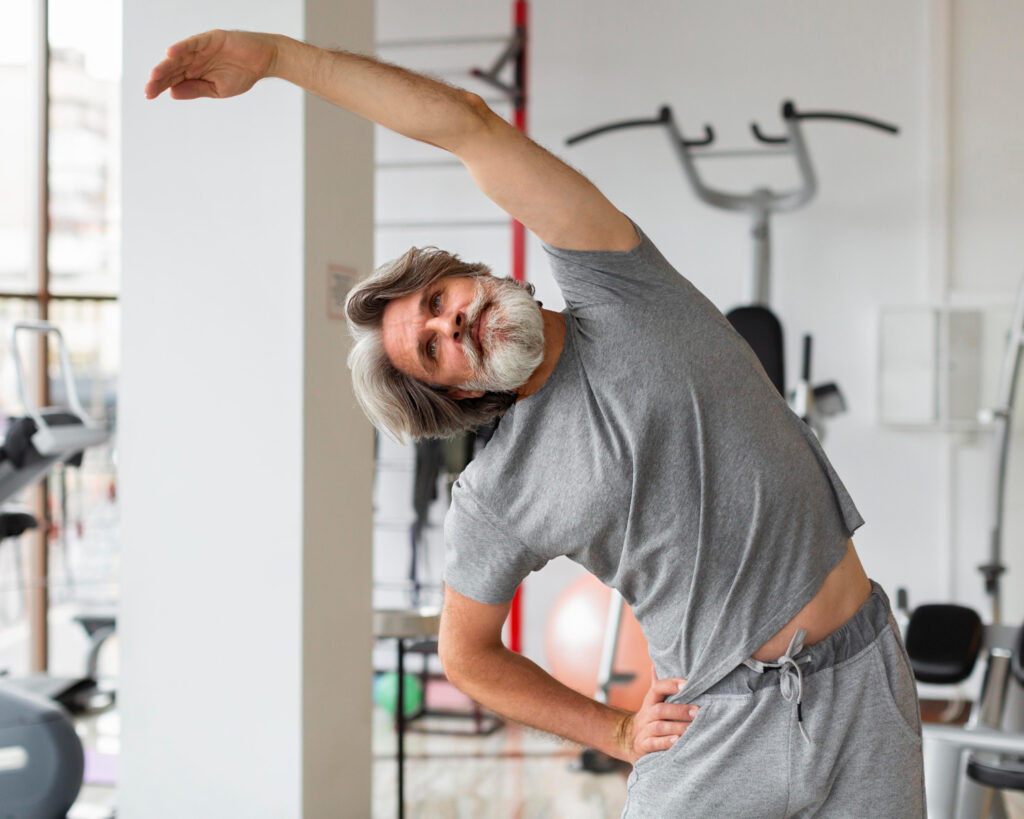
Dynamic stretches involve moving parts of your body through a full range of motion, while static stretches involve holding a position to stretch the muscles. To understand the benefits and best practices for incorporating both types of stretches into your routine, read more at lats stretching exercises.
Difference between the two
Dynamic stretches involve continuous movement, such as arm swings and leg kicks. They help increase blood flow to the muscles, preparing them for activity. On the other hand, static stretches are held in a comfortable position for a period of time, allowing the muscle to relax and lengthen.
Both types are beneficial in improving flexibility and reducing muscle tension during warm-ups or cooldowns.
To incorporate both dynamic and static stretches into your routine, aim for at least 5-10 minutes of stretching before and after exercise. By combining these two methods, you can effectively improve your range of motion and reduce the risk of injury during workouts.
Importance of both in a stretching routine
Dynamic stretches are excellent for warming up the latissimus dorsi muscles, as they involve movement through a full range of motion. These stretches prepare the body for physical activity by increasing blood flow to the muscles and helping to reduce muscle stiffness.
On the other hand, static stretches help relax and lengthen the lats after a workout, promoting flexibility and reducing the risk of injury by improving overall muscle elasticity.
Incorporating both dynamic and static lat stretches in your routine ensures that you can achieve optimal results when it comes to enhancing flexibility and strength in your lats. Dynamic stretching before exercise helps with performance, while incorporating static stretching after workouts promotes relaxation and recovery for improved muscular health.
How to Incorporate Lat Stretches into Your Workout
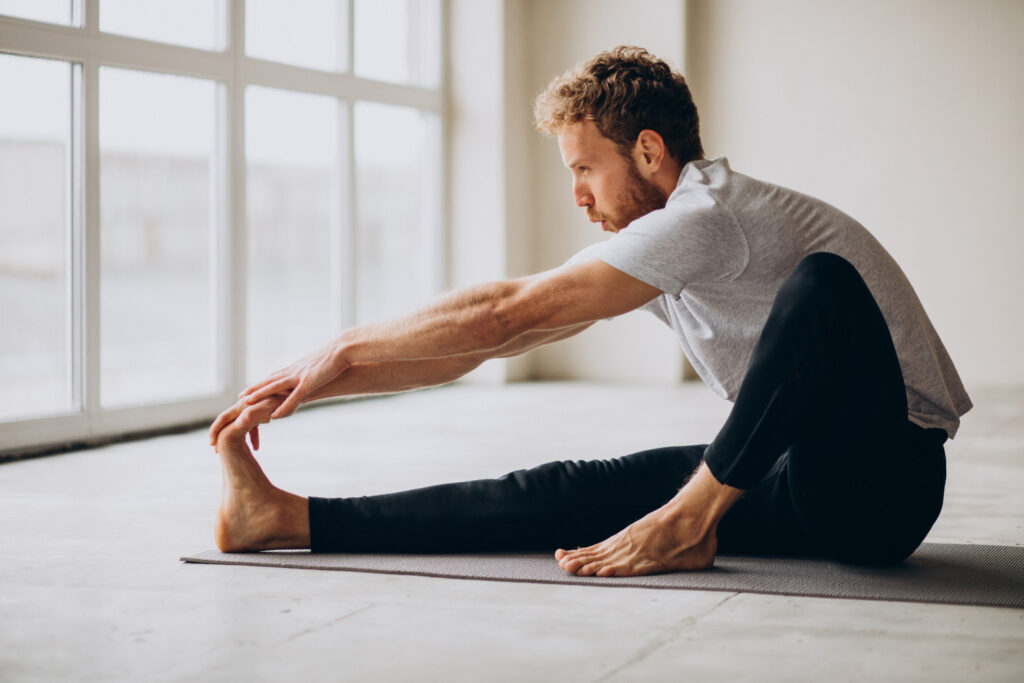
Incorporate lats stretching exercises into your workout routine to improve flexibility and strength. Ready to enhance your performance? Read on for more tips!
Pre-workout stretches
Before starting your workout, it’s essential to incorporate dynamic stretches for the latissimus dorsi to warm up and increase blood flow to the muscles. Begin with movements like arm circles, side bends, and torso twists.
These activities will help prepare your upper body for more intense activity by increasing flexibility and range of motion in the lats, reducing the risk of injury during your workout.
Engage in exercises such as standing lateral stretches and one-handed hang stretches to engage and stretch the latissimus dorsi. These dynamic pre-workout stretches help activate and prepare these muscles for action, improving their performance during exercise.
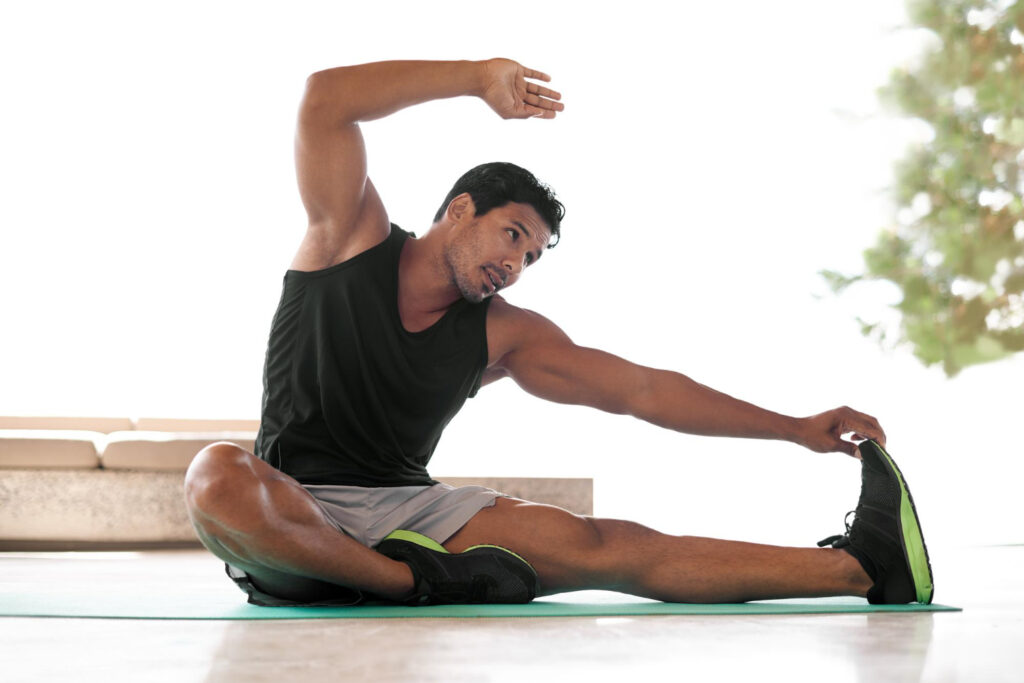
Post-workout stretches
After completing your workout, including a series of post-workout stretches is essential to aid in muscle recovery and prevent stiffness. Engaging in static stretches for the latissimus dorsi helps to relax the muscles and improve flexibility.
Incorporating movements such as seated cross-legged reach forward stretch or sitting bent over back stretch can target these muscles effectively. Holding each stretch for about 30 seconds allows the muscles to relax and lengthen, reducing the risk of injury.
Dynamic movements like dynamic back stretch can also be effective post-workout lat stretches. Emphasizing smooth, controlled movements through lateral flexion and rotation helps in easing tension built up during exercise while promoting blood flow to the area for improved recovery.
Proper form and tips
After completing your post-workout lat stretches, it’s important to focus on proper form and technique. When performing lat stretching exercises, keep your movements slow and controlled to avoid any strain or injury.
Additionally, remember to breathe deeply and evenly throughout each stretch to maximize the benefits for your muscles. Keep in mind that maintaining good posture during the stretches is crucial for targeting the intended muscle groups effectively.
Ensure that you are not pushing yourself too hard; listen to your body and adjust the intensity of the stretch accordingly. Proper alignment, such as keeping your back straight during standing stretches or engaging core muscles during kneeling stretches, will help prevent unnecessary stress on other parts of the body.
Conclusion
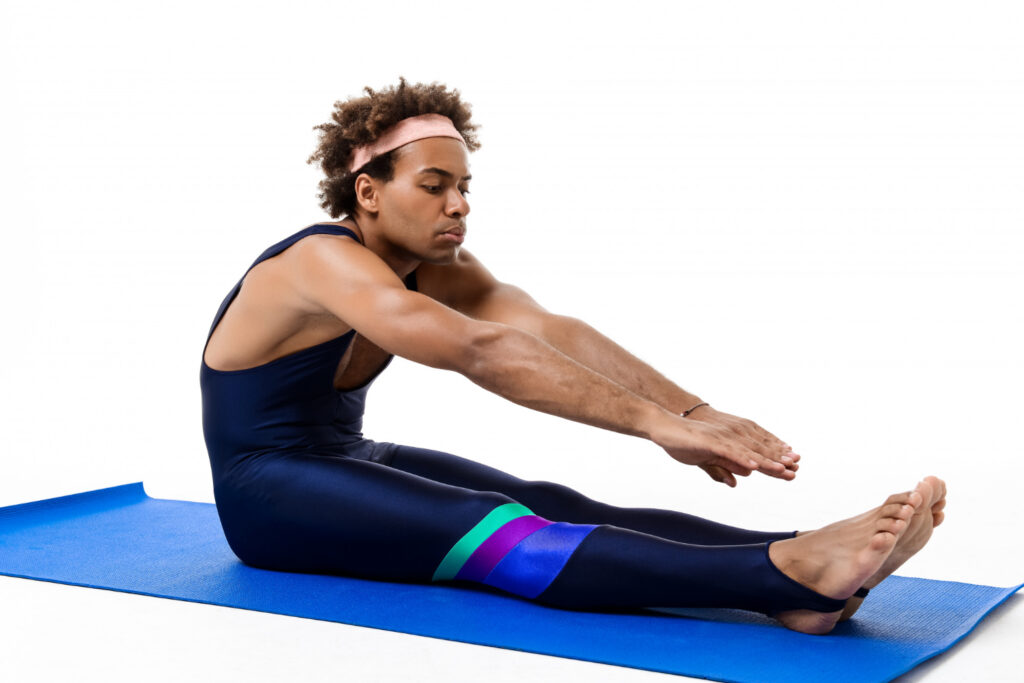
Enhance your flexibility and strength with these lats stretching exercises. Incorporate these practical and efficient techniques into your routine. By doing so, you can experience improved range of motion, enhanced performance, and reduced risk of injury.
Don’t hesitate to explore further resources for continuous learning and improvement in this area. Embrace the potential impact of these strategies on your overall well-being and fitness journey.
It’s time to take action towards a stronger, more flexible body!
FAQs
1. What are latissimus dorsi stretching exercises good for?
Latissimus dorsi stretching exercises help enhance flexibility and strength in your back, improve posture, and support the health of your shoulder joints.
2. Can these stretches help with upper body workouts like chin-ups or lat pulldowns?
Yes! Doing these stretches regularly can increase your range of motion, making exercises like chin-ups and lat pulldowns easier by strengthening and loosening up your muscles.
3. Are there any yoga poses that stretch the latissimus dorsi?
Absolutely! Yoga poses such as Adho Mukha Svanasana (Downward-Facing Dog), Urdhva Mukha Svanasana (Upward-Facing Dog), and Balasana (Child’s Pose) are great for stretching your latissimus dorsi.
4. How do these stretches benefit my shoulders?
These stretches aid in preventing tightness by flexing, extending, and medially rotating the upper arm bone; this helps maintain healthy shoulder mobility and reduces the risk of injury to areas like the rotator cuff.
5. Should I include a cool down after doing these stretching exercises?
Definitely! Including a cool-down phase after performing these stretches helps gradually lower heart rate, relaxes your muscles, especially those around thorax area including trapezius and pecs, ensuring you finish feeling refreshed.
6. Do I need any equipment to perform most of these latissimus dorsi stretching exercises?
No special equipment is needed for most of these stretches; they focus on using body movements such as protraction of arms or spinal flexion to target the muscle effectively from different angles including its insertion points near teres major and sacral vertebrae.

Author
Years ago, the spark of my life’s passion ignited in my mind the moment I stepped into the local gym for the first time. The inaugural bead of perspiration, the initial endeavor, the very first surge of endorphins, and a sense of pride that washed over me post-workout marked the beginning of my deep-seated interest in strength sports, fitness, and sports nutrition. This very curiosity blossomed rapidly into a profound fascination, propelling me to earn a Master’s degree in Physical Education from the Academy of Physical Education in Krakow, followed by a Sports Manager diploma from the Jagiellonian University. My journey of growth led me to gain more specialized qualifications, such as being a certified personal trainer with a focus on sports dietetics, a lifeguard, and an instructor for wellness and corrective gymnastics. Theoretical knowledge paired seamlessly with practical experience, reinforcing my belief that the transformation of individuals under my guidance was also a reflection of my personal growth. This belief holds true even today. Each day, I strive to push the boundaries and explore new realms. These realms gently elevate me to greater heights. The unique combination of passion for my field and the continuous quest for growth fuels my drive to break new ground.

